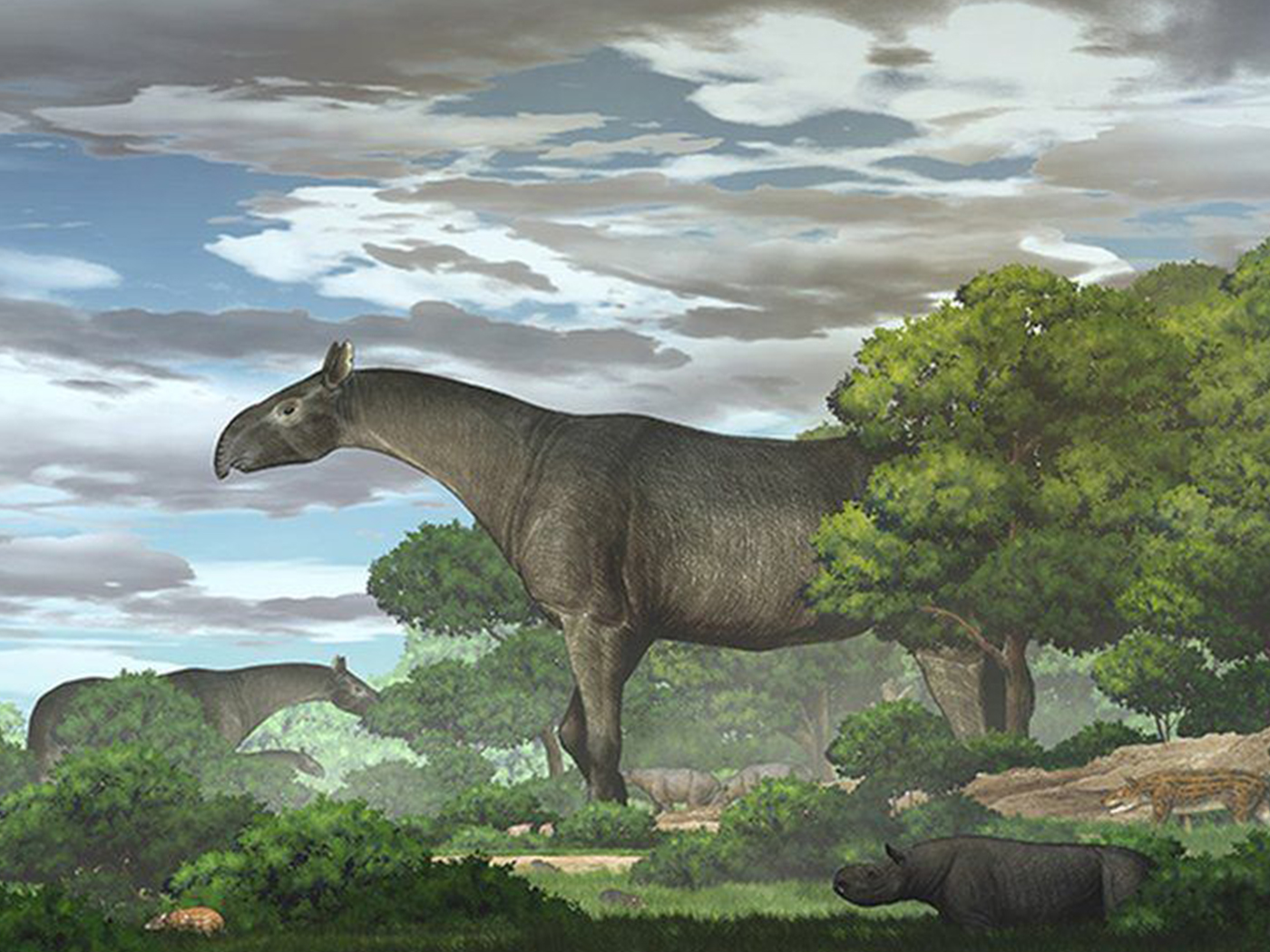Old World monkey and ape fossils both appear suddenly in the fossil record. (Note: “Old World” refers to countries known to Europeans before they discovered the Americas.) In 2013, the fossils were discovered together in an alleged 25 million-year-old Oligocene rock unit in Tanzania.1 Now a new alleged 22 million-year-old monkey fossil found in Kenya2 increases the known diversity for the sudden appearance of Old World monkeys. This find also helps to highlight the Cenozoic strata as being the last sedimentary units deposited as the Genesis Flood receded as part of the Tejas megasequence.
Old World monkeys (Cercopithecidae) are found living across areas of Africa and Asia today and include baboons, macaques, colobus, langurs, and vervets. In total, there are 24 known genera and 128 different species. Evolutionists believe they somehow evolved from New World monkeys which are now only found in South and Central America and whose first fossil representative was a Bolivian fossil claimed to be 26 million years old.3
The obvious problem for evolution is how the monkey groups could have diverged from each other if Gondwana (part of the Pangaean supercontinent) started to split 180 million years ago and then accomplished its complete separation about 100 million years ago. Did the monkeys build boats and sail east across the Atlantic Ocean? And why, if evolution is true, do monkeys first appear in amazing diversity quite suddenly about 22 to 26 million years ago with no clear monkey precursors? Not only that, but the fossil monkeys look just like monkeys today and haven’t evolved since they first appeared.
Fossil monkeys look just like monkeys today and haven’t evolved since they first appeared. ![]()
The creationist model for the global Flood developed by ICR geologist Dr. Tim Clarey4,5 theorizes that monkeys were buried late in the Flood with other animals living at higher elevations. The monkeys lived in these more temperate ecosystems with other large mammals, birds, insects, and even many angiosperm (flowering) plant species. In this model, the order of the strata and fossils is primarily a function of the geographic elevation of the habitats, and not evolutionary progression of simple to complex.
The paleontological fact that monkeys and other temperate-zone creatures are not only buried in these Cenozoic Flood strata, but also make their first appearances in these rocks, convincingly supports Dr. Clarey’s global geological data. It also demonstrates the end of the Flood is demarcated in the upper Cenozoic nearer the Pliocene-Pleistocene boundary.4,5 From the disciplines of stratigraphy, ecology, and paleontology, it’s abundantly apparent that the fossil record of the Genesis Flood is represented throughout nearly all of the geological column (Phanerozoic) except for the Pleistocene, which largely depicts post-Flood Ice-Age deposits.
So how do we interpret this new monkey fossil in the context of a creation model? According to the book of Genesis, we learn that breeding pairs of the different animal kinds were brought onto Noah’s Ark and then released to repopulate the earth after the Flood. The various monkey kinds were among these disembarking creatures. The fact that monkeys in great diversity appear suddenly in the fossil record with no precursors, and they look the same as monkeys living today, also supports the fact that all creatures were created after their kind all at once at the beginning.
They subsequently diversified until the Flood—where only select representative kinds were taken on the ark. This created a genetic bottleneck effect. This is why we see greater diversity in the pre-Flood fossil record for life than what we find living today—a complete contradiction of the progressive evolutionary prediction of simple to complex.6
This monkey fossil discovery is just one finding among many that continue to highlight the amazing initial diversity of life present in the pre-Flood era that descended from the original created kinds.
References
1. Stevens, N. J. et al. 2013. Palaeontological evidence for an Oligocene divergence between Old World monkeys and apes. Nature. 497: 611-614.
2. Rasmussen, D. T. et al. 2019. Primitive Old World monkey from the earliest Miocene of Kenya and the evolution of cercopithecoid bilophodonty. Proceedings of the National Academy of Sciences USA. 116 (13): 6051-6056.
3. Takai, M. et al. 2000. New fossil materials of the earliest new world monkey, Branisella bolivians, and the problem of platyrrhine origins. American Journal of Physical Anthropology. 111 (2): 263–81.
4. Clarey, T. L. 2018. Data Leads to Correct Post-Flood Boundary. Creation Science Update. Posted on ICR.org July 17, 2018, accessed April 20, 2019.
5. Clarey, T. L. 2017. Local Catastrophes or Receding Floodwater? Global Geologic Data that Refute a K-Pg (K-T) Flood/post-Flood Boundary. Creation Research Society Quarterly. 54 (2): 100-120.
6. Tomkins, J. 2019. Hyaenodont Fossil Highlights Diversity and Flood Boundary. Creation Science Update. Posted on ICR.org April 30, 2019, accessed May 15, 2019.
Dr. Tomkins is Director of Life Sciences at the Institute for Creation Research and earned his Ph.D. in genetics from Clemson University.






















